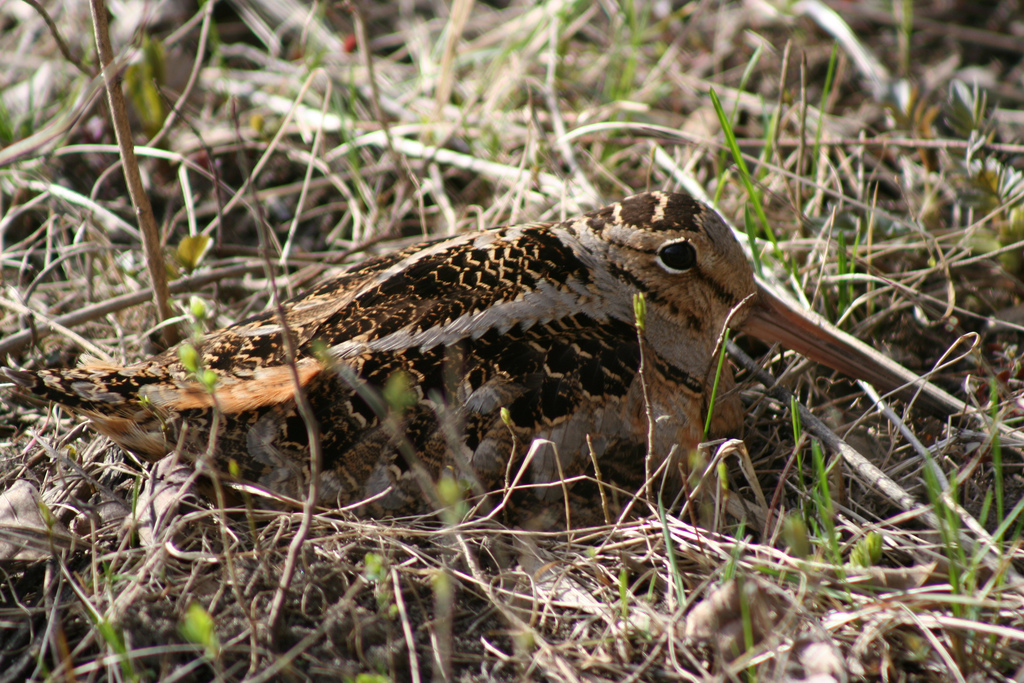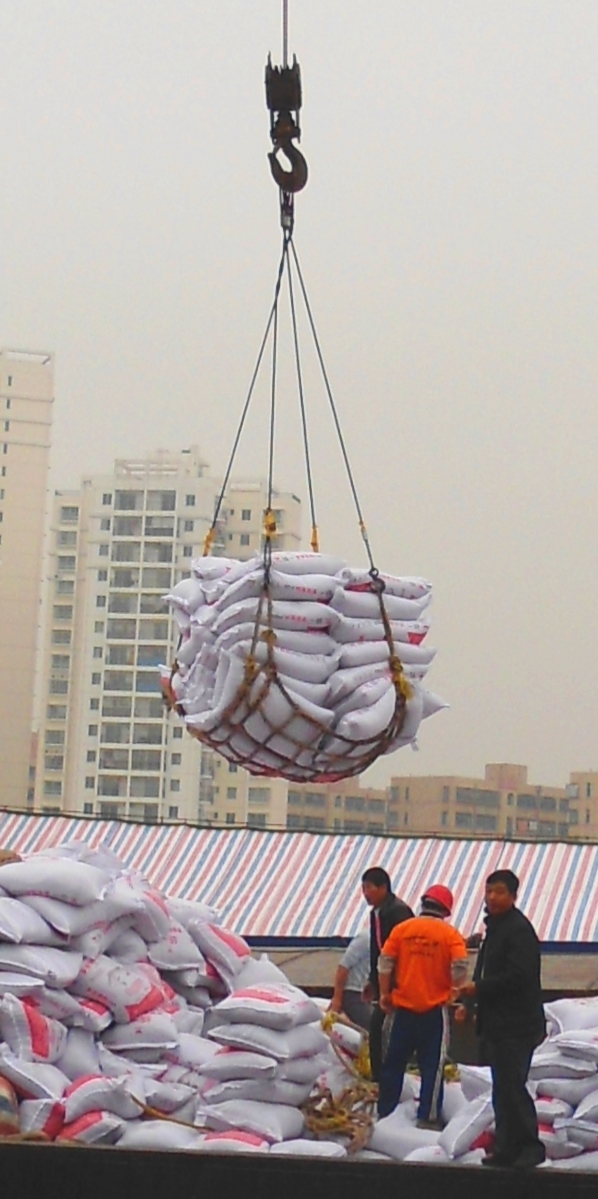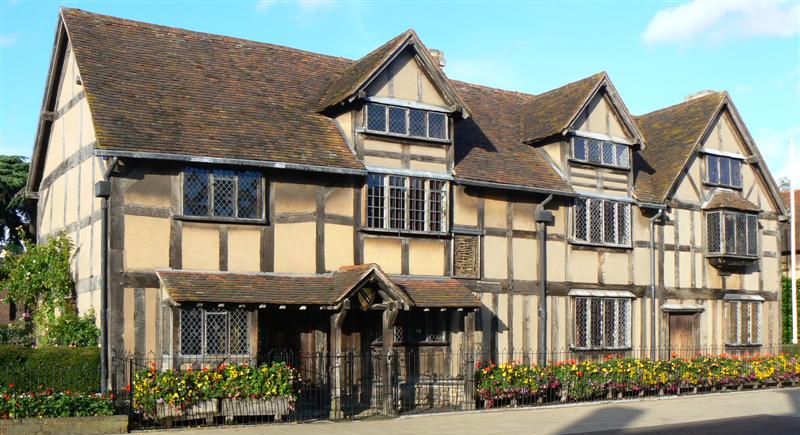|
Cockshoot
In fowl hunting, a cockshoot, also called cockshut or cock-road, was a broad glade, an opening in a forest, through which woodcock might ''shoot''. During the day, woodcocks remain out of sight, unless disturbed; but at night, they take flight in search of water. Flying generally low, they will follow along any openings in the woods. Hunters would place nets across the glade to catch any such birds. If such broad glades did not exist, hunters would cut roads through woods, thickets, groves, etc. They usually made these roads about 40 ft (12 m) wide, perfectly straight and clear; and to two opposite trees, they tied a net, which had a stone fastened to each corner. Then, having a place to lie hidden, at a proper distance, a stake was placed nearby, to which was fastened the lines of the net. When they perceived the game flying up the road, they unwound the lines from the stake; the stones would then pull down the netting, catching the birds. Various dictionaries erroneously appl ... [...More Info...] [...Related Items...] OR: [Wikipedia] [Google] [Baidu] |
Cockshutt (other) or cockshut, a broad opening in a forest
{{disambiguation ...
Cockshutt may refer to: * Cockshutt, Shropshire, a village and civil parish in the United Kingdom * Cockshutt, an area of Highley village, Shropshire, United Kingdom * Ignatius Cockshutt, Canadian businessman * Cockshutt Plow Company, a Canadian company * Henry Cockshutt, Lieutenant-Governor of Ontario and another son of Ignatius * William Foster Cockshutt, Canadian politician and another son of Ignatius See also * Cockshoot In fowl hunting, a cockshoot, also called cockshut or cock-road, was a broad glade, an opening in a forest, through which woodcock might ''shoot''. During the day, woodcocks remain out of sight, unless disturbed; but at night, they take flight in se ... [...More Info...] [...Related Items...] OR: [Wikipedia] [Google] [Baidu] |
Fowl
Fowl are birds belonging to one of two biological orders, namely the gamefowl or landfowl (Galliformes) and the waterfowl ( Anseriformes). Anatomical and molecular similarities suggest these two groups are close evolutionary relatives; together, they form the fowl clade which is scientifically known as Galloanserae (initially termed Galloanseri) (Latin ''gallus'' (“rooster”) + ''ānser'' (“goose”)). This clade is also supported by morphological and DNA sequence data as well as retrotransposon presence/absence data. Terminology As opposed to "fowl", "poultry" is a term for any kind of domesticated bird or bird captive-raised for meat, eggs, or feathers; ostriches, for example, are sometimes kept as poultry, but are neither gamefowl nor waterfowl. In colloquial speech, however, the term "fowl" is often used near-synonymously with "poultry," and many languages do not distinguish between "poultry" and "fowl". Nonetheless, the fact that the Galliformes and Anseriformes mo ... [...More Info...] [...Related Items...] OR: [Wikipedia] [Google] [Baidu] |
Hunting
Hunting is the human practice of seeking, pursuing, capturing, or killing wildlife or feral animals. The most common reasons for humans to hunt are to harvest food (i.e. meat) and useful animal products ( fur/ hide, bone/ tusks, horn/ antler, etc.), for recreation/ taxidermy (see trophy hunting), to remove predators dangerous to humans or domestic animals (e.g. wolf hunting), to eliminate pests and nuisance animals that damage crops/ livestock/ poultry or spread diseases (see varminting), for trade/tourism (see safari), or for ecological conservation against overpopulation and invasive species. Recreationally hunted species are generally referred to as the '' game'', and are usually mammals and birds. A person participating in a hunt is a hunter or (less commonly) huntsman; a natural area used for hunting is called a game reserve; an experienced hunter who helps organize a hunt and/or manage the game reserve is known as a gamekeeper. Many non-human anima ... [...More Info...] [...Related Items...] OR: [Wikipedia] [Google] [Baidu] |
Glade (geography)
In the most general sense, a glade or clearing is an open area within a forest. Glades are often grassy meadows under the canopy of deciduous trees such as red alder or quaking aspen in western North America. They also represent openings in forests where local conditions such as avalanches, poor soils, or fire damage have created semipermanent clearings. They are very important to herbivorous animals, such as deer and elk, for forage and denning activities. Sometimes the word is used in a looser sense, as in the treeless wetlands of the Everglades of Florida. In the central United States, calcareous glades occur with rocky, prairie Prairies are ecosystems considered part of the temperate grasslands, savannas, and shrublands biome by ecologists, based on similar temperate climates, moderate rainfall, and a composition of grasses, herbs, and shrubs, rather than trees, as the ...-like habitats in areas of shallow soil. Glades are characterized by unique plant and animal comm ... [...More Info...] [...Related Items...] OR: [Wikipedia] [Google] [Baidu] |
Forest
A forest is an area of land dominated by trees. Hundreds of definitions of forest are used throughout the world, incorporating factors such as tree density, tree height, land use, legal standing, and ecological function. The United Nations' Food and Agriculture Organization (FAO) defines a forest as, "Land spanning more than 0.5 hectares with trees higher than 5 meters and a canopy cover of more than 10 percent, or trees able to reach these thresholds ''in situ''. It does not include land that is predominantly under agricultural or urban use." Using this definition, '' Global Forest Resources Assessment 2020'' (FRA 2020) found that forests covered , or approximately 31 percent of the world's land area in 2020. Forests are the predominant terrestrial ecosystem of Earth, and are found around the globe. More than half of the world's forests are found in only five countries (Brazil, Canada, China, Russia, and the United States). The largest share of forests (45 percent) are in ... [...More Info...] [...Related Items...] OR: [Wikipedia] [Google] [Baidu] |
Woodcock
The woodcocks are a group of seven or eight very similar living species of wading birds in the genus ''Scolopax''. The genus name is Latin for a snipe or woodcock, and until around 1800 was used to refer to a variety of waders. The English name its first recorded in about 1050. According to the Harleian Miscellany, a group of woodcocks is called a "fall". Taxonomy The genus ''Scolopax'' was introduced in 1758 by the Swedish naturalist Carl Linnaeus in the tenth edition of his ''Systema Naturae''. The genus name is Latin for a snipe or woodcock. The type species is the Eurasian woodcock (''Scolopax rusticola''). Only two woodcocks are widespread, the others being localized island endemics. Most are found in the Northern Hemisphere but a few range into the Greater Sundas, Wallacea and New Guinea. Their closest relatives are the typical snipes of the genus '' Gallinago''. As with many other sandpiper genera, the lineages that led to ''Gallinago'' and ''Scolopax'' likely div ... [...More Info...] [...Related Items...] OR: [Wikipedia] [Google] [Baidu] |
Net (device)
Nets have been constructed by human beings since at least the Mesolithic period for use in capturing or retaining things. Their open structure provide lightness and flexibility that allow them to be carried and manipulated with relative ease, making them valuable for methodical tasks such as hunting, fishing, sleeping, and carrying. Definition A net, in its primary meaning, comprises threads or yarns knotted and twisted into a grid-like structure which blocks the passage of large items, while letting small items and fluids pass. It requires less material than something sheet-like, and provides a degree of transparency, as well as flexibility and lightness. History The oldest nets found are from the Mesolithic era, but nets may have existed in the Upper paleolithic era. Nets are typically made of perishable materials and leave little archeological record. Some nets are preserved in ice or bogs, and there are also clay impressions of nets. Making and repairing nets Orig ... [...More Info...] [...Related Items...] OR: [Wikipedia] [Google] [Baidu] |
Richard III (play)
''Richard III'' is a play by William Shakespeare. It was probably written c. 1592–1594. It is labelled a history in the First Folio, and is usually considered one, but it is sometimes called a tragedy, as in the quarto edition. ''Richard III'' concludes Shakespeare's first tetralogy (also containing '' Henry VI, Part 1'', ''Henry VI, Part 2'', and '' Henry VI, Part 3'') and depicts the Machiavellian rise to power and subsequent short reign of King Richard III of England. It is the second longest play in the Shakespearean canon and is the longest of the First Folio, whose version of ''Hamlet'', otherwise the longest, is shorter than its quarto counterpart. The play is often abridged for brevity, and peripheral characters removed. In such cases, extra lines are often invented or added from elsewhere to establish the nature of the characters' relationships. A further reason for abridgment is that Shakespeare assumed his audiences' familiarity with his ''Henry VI'' plays, fr ... [...More Info...] [...Related Items...] OR: [Wikipedia] [Google] [Baidu] |
Shakespeare
William Shakespeare ( 26 April 1564 – 23 April 1616) was an English playwright, poet and actor. He is widely regarded as the greatest writer in the English language and the world's pre-eminent dramatist. He is often called England's national poet and the " Bard of Avon" (or simply "the Bard"). His extant works, including collaborations, consist of some 39 plays, 154 sonnets, three long narrative poems, and a few other verses, some of uncertain authorship. His plays have been translated into every major living language and are performed more often than those of any other playwright. He remains arguably the most influential writer in the English language, and his works continue to be studied and reinterpreted. Shakespeare was born and raised in Stratford-upon-Avon, Warwickshire. At the age of 18, he married Anne Hathaway, with whom he had three children: Susanna, and twins Hamnet and Judith. Sometime between 1585 and 1592, he began a successful career in London as an ... [...More Info...] [...Related Items...] OR: [Wikipedia] [Google] [Baidu] |
Francis Thompson
Francis Joseph Thompson (16 December 1859 – 13 November 1907) was an English poet and Catholic mystic. At the behest of his father, a doctor, he entered medical school at the age of 18, but at 26 left home to pursue his talent as a writer and poet. He spent three years on the streets of London, supporting himself with menial labour, becoming addicted to opium which he took to relieve a nervous problem. In 1888 Wilfrid and Alice Meynell read his poetry and took the opium-addicted and homeless writer into their home for a time, later publishing his first volume, ''Poems'', in 1893. In 1897, he began writing prose, drawing inspiration from life in the countryside, Wales and Storrington. His health, always fragile, continued to deteriorate and he died of tuberculosis in 1907. By that time he had published three books of poetry, along with other works and essays. Early life and study Thompson was born in Winckley Street, Preston, Lancashire and baptized four days later in St ... [...More Info...] [...Related Items...] OR: [Wikipedia] [Google] [Baidu] |
Fowling
Fowling is the hunting of birds by humans, for food (meat), feathers or any other animal product, commercially value products, or simply for leisure ("field sports, sporting") or trophy hunting, collecting trophies. It is comparable to waterfowl hunting, wildfowling, the practice of hunting waterfowls for food or sport. The term is perhaps better known in the Fens of Eastern England than elsewhere, but was certainly not confined to the Fens. The land margins of the north produced down feathers from eider duck for eiderdowns and quilted jackets without necessarily killing the birds. In the Western Isles of Scotland, seabirds were taken from their nests on cliffs. In The Fens and other similar places, a Duck decoy (structure), decoy was part of a landowner's well-equipped estate. The epitome of fowling was, however, the punt gunner. He had what amounted to a long, Caliber, small-bore Firearm muzzle, muzzle-loaded cannon. It was mounted along the centre-line of the forward half of a ... [...More Info...] [...Related Items...] OR: [Wikipedia] [Google] [Baidu] |




